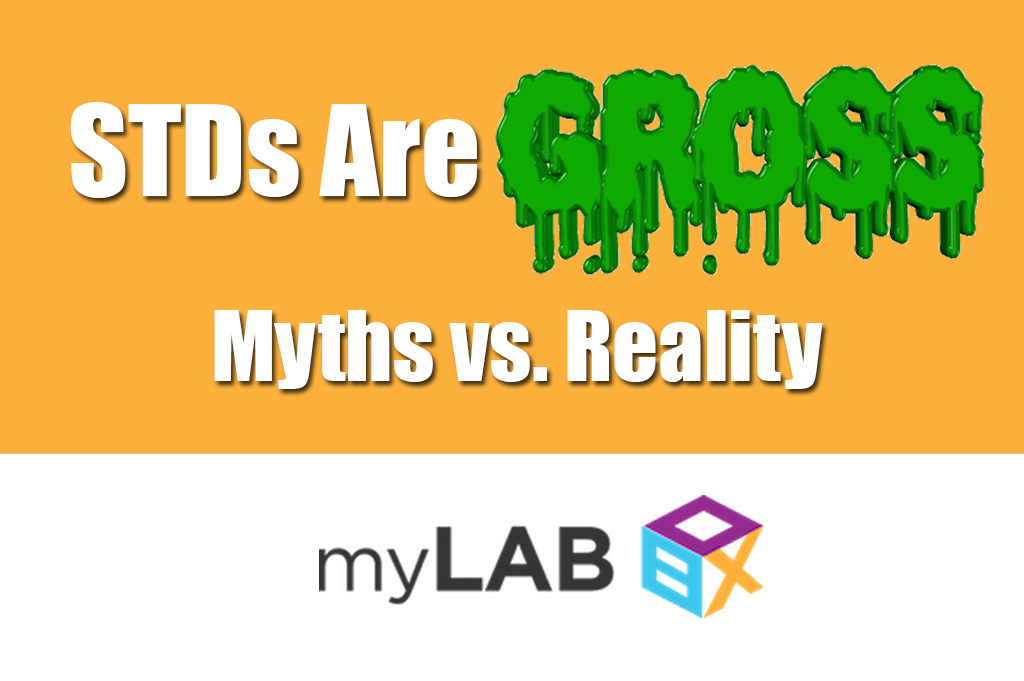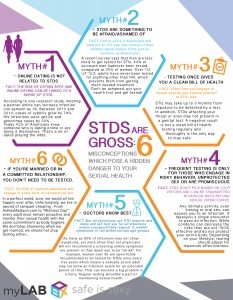STDs Are Gross! Myth vs. Reality

STD Awareness Month may be over, but that is no reason for you to stop being safe. At myLAB Box, the first and only nationwide at-home STD testing service, we’ve created this helpful infographic, featuring some of the most common STD are gross myths, including:
Myth: You Only Have to Get Tested Once!
The truth is that you expose yourself to STDs every time you engage in sex. STIs can take up to 3 months to be detected, and you should ensure that you are getting the proper tests that match your sexual relations. STDs affecting your throat or anus may not be detected by a genital test. In fact, a 2015 Johns Hopkins study of extragenital testing showed a shockingly large amount of undiagnosed cases of gonorrhea and chlamydia. These would have gone undetected if not for the extra screenings.
Myth: An STD is the “Scarlet Letter” of Dating
Actually, 50% of the people in our country alone will contract an Sexually Transmitted Infection (STI) in their lifetime. STDs are a fact of life, and the only recourse is to prioritize your health and get tested.
Myth: You Only Have to Get Tested if You Sleep Around
When it comes to STDs, you have to be concerned with more than just sexual intercourse. Oral sex, or even kissing, can also expose you to an infection. And although condoms decrease the risk of infection, they aren’t 100% effective and don’t protect you when it comes to sexual behaviors aside from intercourse.
Myth: Online Dating is the Best Way to Avoid STDs
In fact, according to a recent research study, the chances of infection via an online date are three times as likely to get an STD. And nowadays 42% of Americans date online, so even if you don’t use online dating apps, the chances that you’ll date someone who is also giving Tinder or OKCupid a try is quite likely.
Myth: You Just Have to Listen to Your Physician
General practitioners are not STD specialists, and may not test you for all infections unless you specifically ask or have symptoms. In fact, as many as 80% of infections may not show symptoms at all, so you need to make regular testing a personal concern.
That last bit is critical. Typical STD exams from a clinic will only check the genital area, but ignoring rectal and oral screening leaves a major portion of STDs undetected. Current public health guidelines dictate that doctors only recommend screening for the so-called “at-risk” population (gay men and HIV-positive individuals). Even then, the additional testing is only offered upon admission of personal details or request.
Here’s that very handy infographic we mentioned earlier. Feel free to share it with your friends and family members!
Reviewed by Luis Ferdinand M. Papa, MD, MHA
Popular Tests

Total Box
14 Panel STD Test
In Stock – Free Shipping
$369 – $399

